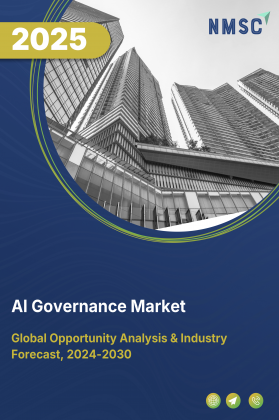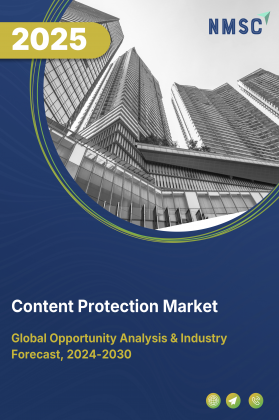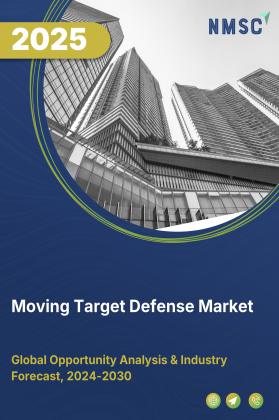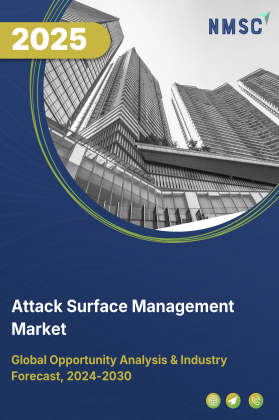
AI Governance Market by Component (Solutions and Service), by Technology (ML, NLP and others), By Type (Ethical AI, AI Transparency and others), Deployment Model (Cloud-Based and On-Premises), by Application (Model lifecycle management, Risk and Compliance and Others), and by Industry Vertical (Healthcare & Life Sciences, BFSI, IT and Telecom, and Others) – Global Opportunity Analysis and Industry Forecast 2025 – 2030
AI Governance Industry Outlook
The global AI Governance Market size is estimated at USD 620.0 million in 2024 and is expected to be valued at USD 940.0 million by the end of 2025. The industry is projected to grow, reaching USD 7380.0 million by 2030, with a CAGR of 51% between 2025 and 2030.
The AI governance market includes frameworks, tools, and services designed to manage and oversee the ethical, legal, and operational aspects of artificial intelligence systems. AI governance solutions ensure that AI technologies are deployed responsibly, aligning with regulatory requirements, ethical standards, and organizational policies to mitigate risks associated with bias, privacy, transparency, and accountability.
These solutions are used across industries such as finance, healthcare, and government, helping organizations manage AI's impact and promote trustworthiness in AI-driven decisions. The importance of AI governance lies in enabling safe, compliant, and ethical AI deployment, essential as AI adoption grows and regulatory scrutiny increases globally.
Compliance Requirements Are Significantly Boosting Market Demand for Governance Solutions
One of the most significant growth drivers in the AI governance market is the global surge in AI regulations and compliance mandates. The European Union's AI Act, officially adopted in March 2024 and coming into force by August 2025, enforces strict rules on transparency, bias mitigation, human oversight, and documentation for AI systems, especially those deemed high-risk.
In parallel, the United States has seen over 550 AI-related legislative bills introduced across 45+ states as of early 2025, and while no federal law exists yet, executive orders and NIST's AI Risk Management Framework are becoming de facto standards for enterprises. Asian countries such as India and China are not far behind.
India, for instance, launched the AI Safety Institute in January 2025 to develop safety protocols and national AI standards. These sweeping regulatory developments are driving enterprises to urgently implement AI governance frameworks to avoid penalties and reputational damage. According to ModelOp’s 2024 industry insights, 77% of organizations have begun developing AI governance programs, with 47% considering it a top-five strategic priority.
Widespread AI Adoption Across Enterprises Is Propelling Market Growth
Enterprise-level AI adoption has exploded, particularly with the rise of generative AI tools. According to McKinsey’s 2024, State of AI report, 78% of surveyed organizations have integrated AI into at least one function, and 71% report using generative AI in core business activities.
However, while pilots and proofs of concept are proliferating, a stark production gap remains, ModelOp estimates that 42% of enterprises fail to scale AI models into real-world operations due to fragmented oversight, third-party model integration issues, and a lack of centralized governance mechanisms.
This gap is prompting organizations to invest in governance solutions that provide model portfolio management, audit trails, explainability, and cross-functional accountability. Governance platforms like ModelOp Center and IBM’s AI Governance Suite are designed to address this exact bottleneck, helping companies transition from experimentation to safe, scalable AI deployment.
Increasing AI-Driven Security Risks Are Driving Strong Demand for Robust Governance Frameworks
As AI systems become integral to digital infrastructure, they also expose organizations to new cybersecurity risks, particularly in sectors like healthcare, manufacturing, and finance, where sensitive data is heavily involved. AI governance solutions are increasingly critical for managing risks such as model hijacking, adversarial attacks, and unauthorized data use.
In 2024, AI-driven cyber threats such as the Medusa ransomware group’s adaptive phishing campaigns illustrated the potential for AI misuse. The AI governance market is almost growing at a CAGR of 36% from 2024 to 2030. This growth is fueled by the need for tools that enforce policy compliance, conduct impact assessments, detect bias, and monitor model behavior in real time. Organizations are increasingly demanding AI platforms that integrate security-by-design and provide continuous governance across the ML lifecycle.
Limited Talent Availability Is Restraining Market Expansion in AI Governance
A major restraint in the AI governance market ecosystem is the acute shortage of skilled professionals with cross-functional expertise in AI, ethics, compliance, risk management, and data privacy. According to the 2025 IAPP AI Governance Profession Report, only 1.5% of surveyed organizations believe they have adequate governance headcount, while 23.5% cite lack of qualified professionals as a top implementation barrier.
As AI governance involves navigating complex legal, technical, and ethical landscapes, this multidimensional knowledge gap hinders companies from setting up effective and accountable systems. Many organizations are forced to delay their governance roadmaps or rely on under-resourced compliance teams making it difficult to respond to evolving regulations and increasing their exposure to AI-related risks.
The Rise of Agentic AI Is Creating New Market Opportunities for Trust-Centric Governance Platforms
A major growth opportunity on the horizon is the development of AI governance frameworks tailored to agentic AI, an AI system that plan, reason, and act autonomously. These next-gen systems present unprecedented governance challenges, including ethical reasoning, autonomous decision transparency, and accountability. In response, companies like OneTrust and IBM are building trust-centric platforms that embed governance capabilities directly into AI workflows.
For example, OneTrust Copilot, launched in April 2025, uses generative AI to automate tasks like data mapping, impact assessments, and consent management bringing governance into real-time operations. This shift reflects a broader industry trend toward proactive, integrated governance tools that go beyond compliance to offer adaptive control, explainability, and continuous assurance for increasingly independent AI agents.
As AI systems become more autonomous, the demand for governance frameworks that are dynamic, context-aware, and integrated will likely define the next phase of the AI governance market growth.
Market Segmentations and Scope of the Study
The AI governance market report is segmented based on component, technology, type deployment mode, governance model, regulatory/risk focus, enterprise size, application enterprise, industry vertical, and region. On the basis of component, the market is divided into solutions and service. On the basis of technology, machine learning, natural language processing and others. On the basis of deployment model, the market is segmented into cloud-based and on-premises. On the basis of enterprise, the market is divided into small and medium enterprise and large enterprise. On the basis of industry vertical, the market is divided into healthcare & life sciences, BFSI, IT and telecom, and others. Regional breakdown and analysis of each of the aforesaid segments includes regions comprising of North America, Europe, Asia-Pacific, and RoW.
Geographical Analysis
North America currently commands the global AI governance market share, with U.S. federal and state-level initiatives driving demand. In July 2025, leading tech firms such as Microsoft, Amazon, and Google publicly supported the need for federal AI governance to provide a unified national framework and simplify compliance amid patchwork state regulations, reinforcing North America’s dominance in both innovation and policy shaping.
Microsoft's Responsible AI Standard 2.0, released in early 2024, underscores the company's leadership in embedding ethics and governance into AI offerings. With major enterprises already investing heavily in governance solutions, North America is set to maintain its pre-eminence through at least the mid-2020s.
Moreover, Europe holds a strong second position in the market and is projected to sustain robust growth. In February 2025, the European Commission unveiled its InvestAI initiative, a USD 233.4 billion package, including a USD 23.36 billion fund dedicated to AI gigafactories and infrastructure to support secure model development.
These investments are intrinsically tied to the enforcement of the EU AI Act, which is positioning Europe as a global leader in trustworthy AI. By coupling heavy regulatory oversight with infrastructure funding, Europe solidifies its trajectory to lead in both AI innovation and governance compliance in the coming years.
On the other hand, The Asia-Pacific region is witnessing the fastest growth in the AI governance market, supported by high CAGR projections. Governments across China, India, South Korea, and Japan are advancing national AI strategies and oversight frameworks. In January 2025, Cohere launched North for Banking in partnership with RBC, and later with SAP and LG in May 2025, to introduce secure generative AI platforms tailored for APAC markets.
Furthermore, regions beyond North America, Europe, and APAC such as the Middle East, Latin America, and Africa account for a smaller but steadily expanding share in AI governance. The UAE’s Artificial Intelligence Office adopted its AI Charter in July 2024, establishing 12 ethical principles for AI usage aimed at privacy, fairness, and accountability. Additionally, the October 2024 UAE Cabinet directive formally integrated national AI policy into its foreign affairs strategy. Though growth rates remain modest, such policy signals are building essential governance frameworks, especially in finance, e government, and smart infrastructure sectors across the region.
Strategic Analysis Adopted by Key Players
Key players in the AI governance industry are actively strengthening their market presence through strategic product launches, cross-platform integrations, dedicated AI governance initiatives, and collaborative centers of excellence.
-
In March 2025, OneTrust introduced its first AI-powered agent leveraging Microsoft Security Copilot to streamline data breach response and regulatory compliance. This tool automates critical workflows like incident triage, reporting, and remediation guidance, significantly enhancing efficiency and reducing organizational risk exposure.
-
In January 2025, Microsoft established CoreAI, Platform and Tools, a dedicated engineering group aimed at unifying AI development across its ecosystem. This initiative focuses on embedding governance, tooling, and agentic AI capabilities into Microsoft’s core platforms, strengthening its commitment to secure, scalable, and accountable AI deployment.
-
In December 2024, IBM released watsonx.governance 2.1, adding deeper integrations with Amazon SageMaker and Guardium AI Security. These features enable seamless governance of SageMaker model registries, proactive detection of shadow AI deployments, and unified oversight of AI risk and compliance.
-
In May 2024, IBM and LTIMindtree launched a Generative AI Center of Excellence (CoE) in India, powered by the watsonx platform including watsonx.ai, watsonx.data, and watsonx.governance. This CoE enables clients to co-develop generative AI solutions with built-in governance frameworks, enhancing deployment speed and regulatory compliance for enterprise use cases.
-
In early 2024, Casper Labs (now Prove AI) launched Prove AI, a blockchain-powered governance tool integrated with IBM’s watsonx.governance. Built on the Casper blockchain, it ensures tamper-proof audit logs, version control, and immutable lineage of AI training data, ideal for regulated industries demanding transparency.
Key Benefits
-
The report provides quantitative analysis and estimations of the industry from 2025 to 2030, which assists in identifying the prevailing AI governance market opportunities.
-
The study comprises a deep-dive analysis of the current and future AI governance market trends to depict prevalent investment pockets in the sector.
-
Information related to key drivers, restraints, and opportunities and their impact on the AI governance market is provided in the report.
-
Competitive analysis of the key players, along with their market share is provided in the report.
-
SWOT analysis and Porters Five Forces model is elaborated in the study.
-
Value chain analysis in the AI governance market study provides a clear picture of roles of stakeholders.
AI governance Market Key Segments
By Component
-
Solutions
-
Platforms & Software Tools
-
End-to-end AI governance platforms
-
MLOps & LLMOps tools
-
Data privacy tools
-
-
Explainability & Interpretability Tools
-
Bias Detection & Mitigation Tools
-
Model Monitoring & Validation
-
Fairness & Transparency Solutions
-
Risk & Compliance Management Tools
-
-
Service
-
Consulting
-
Integration & Implementation
-
Support & Maintenance
-
Training and Education
-
Managed Services
-
Compliance Advisory
-
Risk Analysis Services
-
By Technology
-
Machine Learning (ML)
-
Natural Language Processing (NLP)
-
Computer Vision
-
Context-Aware Computing
By Type
-
Regulatory Compliance
-
Ethical & Responsible AI
-
Transparency
-
Accountability
-
-
Operational & Data Governance
By Deployment Model
-
Cloud-Based / SaaS
-
On-Premises / Private Cloud
By Governance Model Type
-
Frameworks & Standards
-
Lifecycle Governance
By Regulatory / Risk Focus
-
Compliance-focused governance
-
Ethical / Responsible AI Governance
By Enterprise Size
-
Small and Medium Enterprise (SMEs)
-
Large Enterprise
By Application
-
Model lifecycle management
-
Risk and compliance
-
Ethics and responsible AI
-
Predictive Analytics
By Industry Vertical
-
BFSI
-
Government & Defense
-
Healthcare & Life Sciences
-
Media & Entertainment
-
Retail & E- commerce
-
IT & Telecommunications
-
Automotive
-
Others
By Region
-
North America
-
The U.S.
-
Canada
-
Mexico
-
-
Europe
-
The UK
-
Germany
-
France
-
Italy
-
Spain
-
Denmark
-
Netherlands
-
Finland
-
Sweden
-
Norway
-
Russia
-
Rest of Europe
-
-
Asia-Pacific
-
China
-
Japan
-
India
-
South Korea
-
Australia
-
Indonesia
-
Singapore
-
Taiwan
-
Thailand
-
Rest of Asia-Pacific
-
-
RoW
-
Latin America
-
Middle East
-
Africa
-
Key Players
-
IBM Corporation
-
SAP SE
-
Google Cloud
-
Amazon Web Services
-
DataRobot, Inc.
-
Credo AI
-
SAS Institute
-
Monitaur
-
FairNow
-
H2O.ai
-
Arthur AI
-
OneTrust, LLC
-
Fiddler Ai
Report Scope And Segmentation
|
Parameters |
Details |
|
Market Size in 2025 |
USD 940.0 million |
|
Revenue Forecast in 2030 |
USD 7380.0 million |
|
Growth Rate |
CAGR of 51% from 2025 to 2030 |
|
Analysis Period |
2024–2030 |
|
Base Year Considered |
2024 |
|
Forecast Period |
2025–2030 |
|
Market Size Estimation |
Billion (USD) |
|
Growth Factors |
|
|
Countries Covered |
28 |
|
Companies Profiled |
10 |
|
Market Share |
Available for 10 companies |
|
Customization Scope |
Free customization (equivalent up to 80 working hours of analysts) after purchase. Addition or alteration to country, regional, and segment scope. |
|
Pricing and Purchase Options |
Avail customized purchase options to meet your exact research needs. |
















 Speak to Our Analyst
Speak to Our Analyst

























